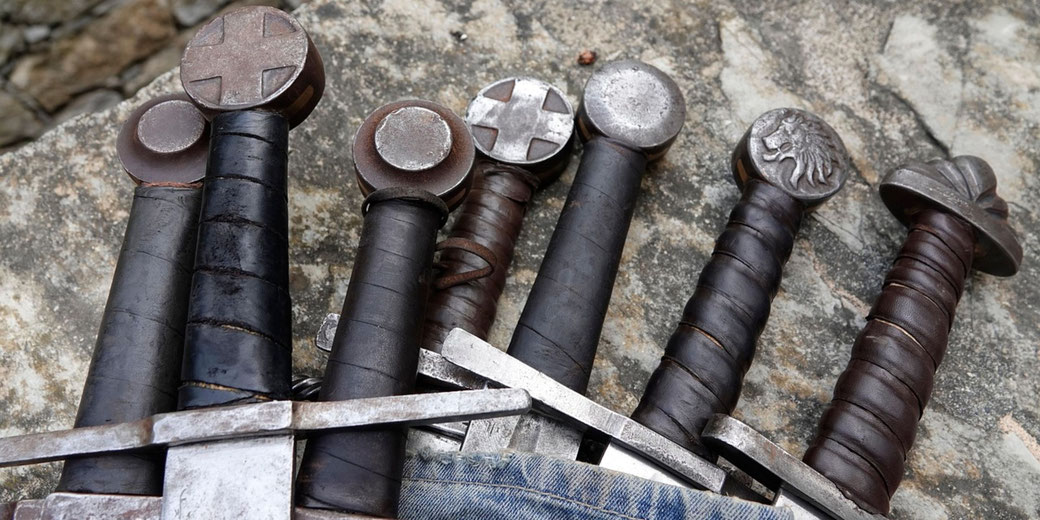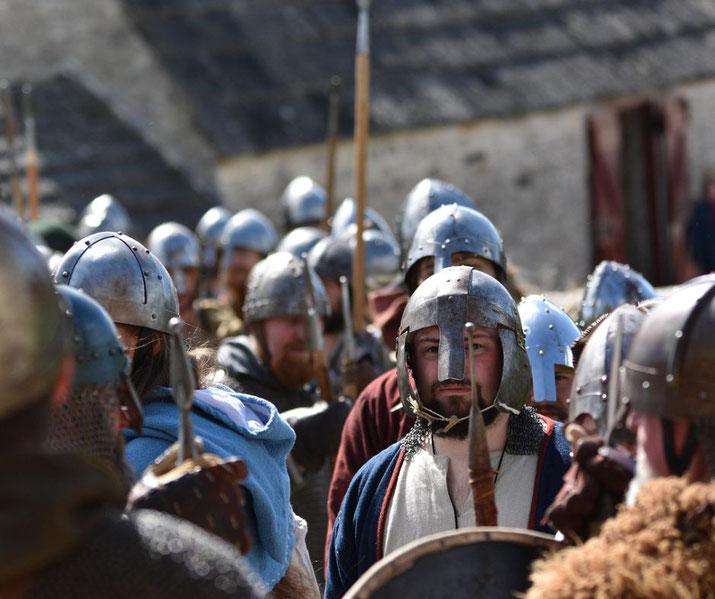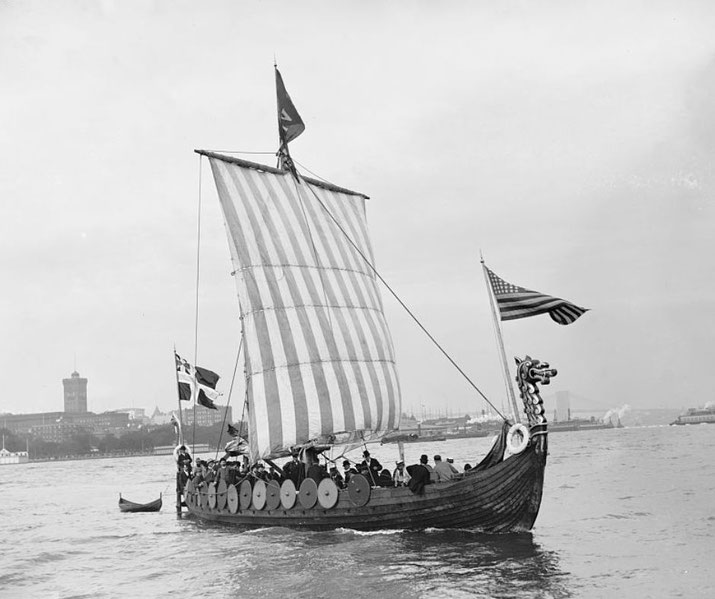How the Great Heathen Army slaughtered all before them during the Dark Ages

The Great Heathen Army, a coalition of Norse warriors, stormed the shores of England in the mid-9th century, forever altering the trajectory of the island nation's history.
Originating from the rugged landscapes of Scandinavia, these Viking invaders were driven by a combination of ambition, revenge, and the lure of England's riches.
Their arrival posed a formidable challenge to the fragmented Anglo-Saxon kingdoms, which were ill-prepared for the scale and ferocity of the Viking onslaught.
Why the Vikings were in England
The Viking Age, which spanned the late 8th to early 11th centuries, saw Norse seafarers embark on a series of raids, explorations, and settlements across Europe, Asia, and even North America.
These voyages were fueled by a combination of factors: overpopulation in their native lands, political strife, and the allure of wealth from more prosperous regions.
Meanwhile, Anglo-Saxon England, a patchwork of rival kingdoms, was experiencing its own set of challenges.
Political fragmentation, internal conflicts, and a relatively decentralized power structure made it a tempting target for external invaders.
By the time the Great Heathen Army set its sights on England, the Vikings had already established a reputation as formidable raiders, having attacked monasteries and settlements along the English coast.
These early raids were often hit-and-run affairs, with the Vikings seizing treasures and captives before returning to their ships.
However, the Great Heathen Army's campaign was different in scale and intent.
Instead of mere raiding, they sought conquest and settlement, driven by both the desire for new lands and, according to some sources, a quest for vengeance for the death of the legendary Norse hero, Ragnar Lothbrok.

What was the Great Heathen Army?
Norse sagas and chronicles suggest that the army was formed as a coalition of warriors from various Norse regions, including Denmark, Norway, and possibly Sweden.
This wasn't a ragtag group of raiders; it was a coordinated force with a clear purpose.
Two figures prominently stand out as leaders of this formidable force: Ivar the Boneless and Halfdan Ragnarsson.
Both were reputedly sons of Norse chieftain Ragnar Lothbrok, a figure whose exploits, whether historical or embellished by legend, were widely known throughout the Viking world.
Beyond the leadership, the composition of the army itself was diverse. It wasn't composed solely of seasoned warriors.
Alongside them were younger fighters eager to prove their mettle, as well as settlers and, in some cases, their families.
This mix indicated that they were also looking for lands to settle and cultivate.
The presence of various chieftains and warriors from different Norse clans and regions also suggests that while they might have had individual motives and ambitions, they were united, at least temporarily, in their goal of conquering parts of England.
While exact numbers are uncertain, modern estimates suggest that the Great Heathen Army may have initially numbered between 2,500 and 5,000 warriors, far larger than typical Viking raiding parties.

The major battles fought by the Great Heathen Army
Their invasion began in earnest in 865 when they landed in East Anglia. Initially, the Vikings secured horses, likely through a pact with the East Anglians, which allowed them greater mobility for their subsequent campaigns.
In 866, the army turned its attention to Northumbria, capturing the city of York.
This victory was significant, not just for its strategic value but also because Northumbria was the realm of King Ælla, the man purportedly responsible for Ragnar Lothbrok's death.
The capture of York was followed by Ælla's defeat and, according to Norse sagas, his brutal execution by the method of the 'blood eagle', a grisly form of retribution.
The following years saw the Great Heathen Army engage in a series of campaigns against the remaining Anglo-Saxon kingdoms.
In 867, they faced a combined force of Mercians and Northumbrians at Nottingham but managed to hold their ground.
By 869, they returned to East Anglia, resulting in the death of King Edmund, who would later be venerated as a martyr and saint.
Wessex, under the leadership of King Alfred the Great, proved to be a formidable opponent.
The two forces clashed multiple times, with the Battle of Ashdown in 871 being a notable confrontation where the Anglo-Saxons managed to secure a victory.
However, the Great Heathen Army continued its campaigns, wintering in various locations, including the strategic base camp at Repton in 873-874.
This allowed them to consolidate power, recruit reinforcements, and launch new offensives in spring.
Much of what is known about the Great Heathen Army’s campaigns comes from the Anglo-Saxon Chronicle, a collection of annals compiled during the reign of Alfred the Great.

How they were eventually defeated
The Great Heathen Army's initial successes in England were formidable, but over time, several factors contributed to their decline.
One of the primary challenges they faced was the rising strength and unity of the Anglo-Saxon kingdoms, particularly Wessex under the leadership of King Alfred the Great.
The turning point in Wessex's resistance came at the Battle of Edington in 878, where King Alfred decisively defeated the Viking forces, forcing them to withdraw from much of southern England.
The Viking leader Guthrum agreed to the Treaty of Wedmore, which led to Guthrum’s conversion to Christianity and a division of England into Anglo-Saxon and Viking spheres.
Alfred's later military reforms, including the establishment of fortified towns known as 'burhs' and a standing army, made it increasingly difficult for the Vikings to gain new territories and hold onto their existing ones.
Additionally, internal divisions among the Vikings, coupled with the challenges of governing and administrating newly acquired lands, weakened their cohesive strength.
As the years went by, many Vikings chose to settle down, adopting farming and integrating into local communities.
This assimilation, while beneficial for cultural exchange, diluted the once fearsome reputation of the Great Heathen Army as a unified force of invaders.
What do you need help with?
Download ready-to-use digital learning resources
Copyright © History Skills 2014-2025.
Contact via email
With the exception of links to external sites, some historical sources and extracts from specific publications, all content on this website is copyrighted by History Skills. This content may not be copied, republished or redistributed without written permission from the website creator. Please use the Contact page to obtain relevant permission.





